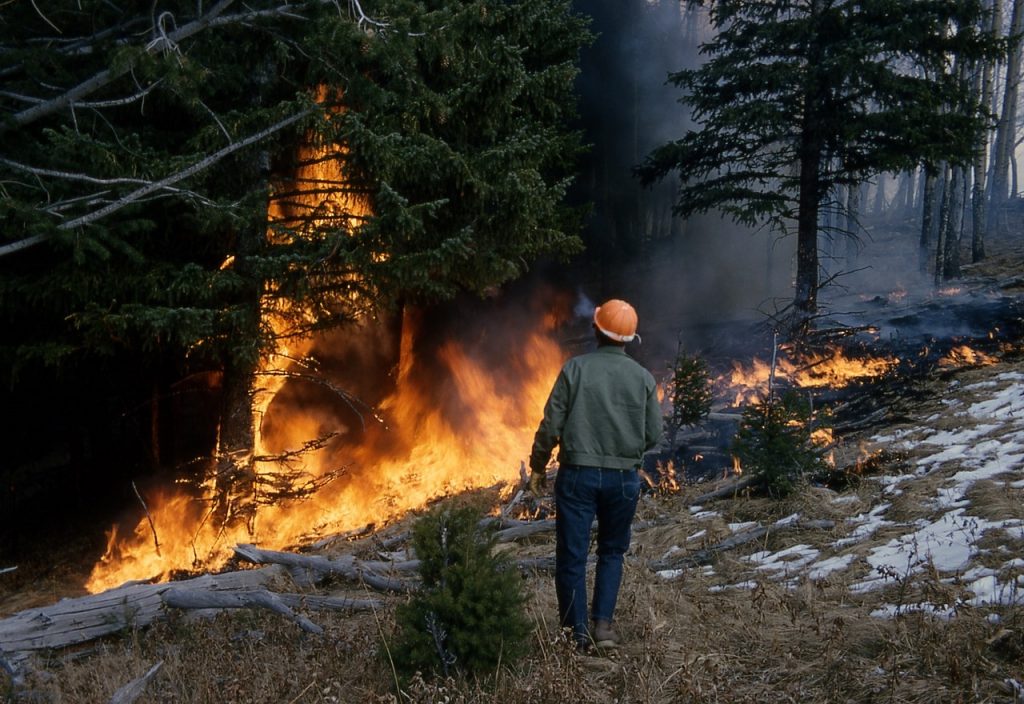They can start with just a spark and can burn for months, affecting landscapes and lives for years.
Bushfires are a natural, essential and complex part of the Australian environment and have been for thousands of years. Our country’s first inhabitants lived seemingly hand in hand with fire, having developed complex fire management practices that complemented their deep understanding of the country and landscape in which they lived. Our ecosystems have evolved to be fire-dependent, and require the periodic presence of fire. Herein lies the complexity: Australia is a land of fire where people have chosen to live.
Since European settlement, bushfires have been an event to be endured, a natural disaster with sometimes catastrophic effects. Research efforts have focused on how to predict and control bushfires in order to best protect lives and infrastructure, as well as understand the role that fire plays in the Australian landscape.
Predicting when and where bushfires are likely to occur is obviously an important and useful part of bushfire management. It will be particularly important across many parts of Australia where the number of days of extreme fire danger are projected to increase under climate change.
Current thinking around predicting bushfires incorporates four ‘switches’ which all need to be ‘on’ for a fire to occur.

- Fuel to Burn
The Australian bush, though it has a reputation for being dry and scrubby, varies greatly from place to place around the country. There are regions of open woodlands, grassland savannas, dense rainforest. A bushfire will burn anything that it finds in its path, but different types of vegetation burn differently. Generally, fuel is classified as being fine (grasses and twigs that are less than 6 millimetres in diameter) or heavy (branches, logs or stumps). Finer fuels burn more easily, feeding the spread of the fire, but heavier fuels burn with greater intensity, creating more heat and making the fire more difficult to put out.
- Dryness of Fuel
Another key factor is fuel moisture, or how dry the bush is. The drier the fuel, the more easily it will burn. Fuel fits into two main categories: live and dead. Live fuels contain moisture that is regulated by the plants’ physiology as well as the amount of recent rainfall. Dead fuel’s moisture content tends to reflect the atmospheric moisture content—the relative humidity and level of moisture in the soil. These depend on recent rainfall and temperatures.
Researchers are developing methods of using remote sensing data from satellites or aircraft to detect the relative dryness of the bush. One way satellites can estimate fuel moisture is by picking up changes in the greenness of vegetation, an indicator of vegetation dryness. This is particularly important in grasslands. The key controls on the dryness level in fine fuels are relative humidity, temperature and recent rainfall.
- Weather Conditions
Certain weather conditions fuel a fire and help it burn. Long-term seasonal weather patterns, such as periods of drought or rainfall, can affect the availability and moisture content of vegetation and the fuel available for a fire to burn. A fire is much more likely to ignite, and continue to burn, in hot, dry and windy weather.
- Source of Ignition
Lightning strikes can provide the initial spark that sets off a bushfire, and cause around half of Australia’s bushfires. Other causes can be faulty electrical wires, a cigarette carelessly tossed out of a car window, a hazard reduction burn gone wrong, arson, or accidental igniton.

Warning and survival
Being able to predict bushfires means we can more effectively warn people, prevent loss of life and avoid catastrophic damage to property and infrastructure. Australia has a national fire danger rating system that was originally developed in the 1960s. It is based on weather conditions and local fuel loads. The Australian Bureau of Meteorology provides weather forecasts and fire weather warnings to both media agencies and local fire authorities to help inform their decisions about issuing fire danger ratings. Meteorologists are also directly involved with decision making on the ground.
Following the Black Saturday bushfires in Victoria in 2009, the states and territories modified the warning levels to include a higher level: Catastrophic (referred to as Code Red in Victoria). Current efforts are updating the science underpinning the danger rating system and developing a standardised fire danger rating system that will apply across the country.
Concerned about the risk of bushfire affecting your property? Turn to the experts at Land Management Systems today for an in-depth fire risk assessment and advice on how to protect your property from the flames.

